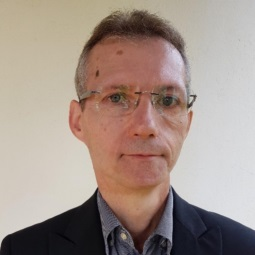Advanced Knowledge and Modelling of Welded Materials for Ultrasonic Testing
A special issue of Applied Sciences (ISSN 2076-3417). This special issue belongs to the section "Acoustics and Vibrations".
Deadline for manuscript submissions: closed (25 May 2023) | Viewed by 10391
Special Issue Editor
Interests: nondestructive testing; welding; bonding; ultrasonics; wave propagation; structure noise, wave attenuation; nonlinear acoustics; liquid metal; data merging; automatic BSCAN thresholding
Special Issue Information
Dear Colleagues,
The purpose of this Special Issue of Applied Sciences (IF: 2.679) is to bring together advanced developments on the ultrasonic testing of welded material and state-of-the-art knowledge on welded material. All welding processes are studied including additive manufacturing (AM) such as wire-arc AM. In many cases precise ultrasonic testing is required to demonstrate the mechanical integrity of a structure. It is known that a perfect knowledge of the welded materials and the weld geometry is required to reach this goal. It is a real necessity to produce convincing modelling to help NDT experts to plan or to qualify NDT methods. The welding of dissimilar materials, anisotropic materials or heterogeneous materials and additive manufacturing produces complex and structured materials that should be described with precision to ensure a good understanding of ultrasonic testing. This Special Issue welcomes research papers aiming to ally material sciences and NDT science and to share knowledge and advances on this topic. The final goal is to assess mechanical integrity so Artificial Intelligence developments to improve UT testing of welds are also highly welcome.
We invite prospective authors to submit innovative and high-quality papers with original perspectives. The Special Issue is open to both original research articles and review articles covering all the relevant progress in these fields (including but not limited to the following):
- Weld material description;
- Materials vs. welding process;
- Additive manufacturing
- Modelling ultrasonic testing;
- Hybrid modelling;
- Attenuation and deviation of waves
- Phased arrays UT
- Inverse problems
- Artificial Intelligence
We look forward to hearing back from you soon.
Kind regards,
Prof. Dr. Joseph Moysan
Guest Editor
Manuscript Submission Information
Manuscripts should be submitted online at www.mdpi.com by registering and logging in to this website. Once you are registered, click here to go to the submission form. Manuscripts can be submitted until the deadline. All submissions that pass pre-check are peer-reviewed. Accepted papers will be published continuously in the journal (as soon as accepted) and will be listed together on the special issue website. Research articles, review articles as well as short communications are invited. For planned papers, a title and short abstract (about 100 words) can be sent to the Editorial Office for announcement on this website.
Submitted manuscripts should not have been published previously, nor be under consideration for publication elsewhere (except conference proceedings papers). All manuscripts are thoroughly refereed through a single-blind peer-review process. A guide for authors and other relevant information for submission of manuscripts is available on the Instructions for Authors page. Applied Sciences is an international peer-reviewed open access semimonthly journal published by MDPI.
Please visit the Instructions for Authors page before submitting a manuscript. The Article Processing Charge (APC) for publication in this open access journal is 2400 CHF (Swiss Francs). Submitted papers should be well formatted and use good English. Authors may use MDPI's English editing service prior to publication or during author revisions.





